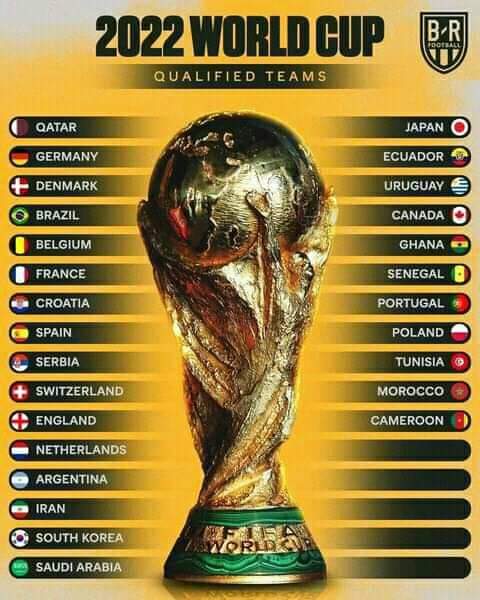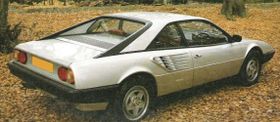Ferrari Mondial


| |
| Ferrari Mondial | |
|---|---|
| Manufacturer: | Ferrari |
| Class: | mid-engined 2+2 |
| Production: | 1980 — 1992 |
| Related: | 308 GTB/GTS 328 GTB/GTS 348 |
| Predecessor: | 208/308 GT4 |
| Mondial 8 | |
| Production: | 1980 — 1984 |
| Body styles: | Coupe Cabriolet |
| Engines: | 3.0 L V8 3.0 L 4v V8 Quattrovalvole |
| 3.2 Mondial | |
| Production: | 1985 — 1988 |
| Body styles: | Coupe Cabriolet |
| Engines: | 3.2 L V8 |
| Mondial t | |
| Production: | 1989 — 1993 |
| Body styles: | Coupe Cabriolet |
| Engines: | 3.4 L V8 |
The Ferrari Mondial is a 2+2 coupe automobile produced from 1980 through 1993. It replaced the angular 208/308 GT4 "Dino". Although the Mondial was styled by Pininfarina rather than Bertone, it shared much of its predecessor's boxiness and is often criticized as a lesser model for the marque. It was sold as a large coupe and, eventually, cabriolet. The Mondial was produced in fairly high numbers for Ferrari, with more than 6,800 produced in its 12-year run, and is today one of the most affordable Ferrari models.
Mondial 8
The Mondial was introduced as the Mondial 8 in 1980. It was the first Ferrari to depart from the company's familiar 3-digit naming scheme, and was fairly mild-performing (for a Ferrari). It used a mid/rear-mounted V8, shared with the 308, mounted transversely. The engine was originally used in the 1974 Dino 308 GT4. The chassis was also based on the 308 GT4, but with a 100 mm longer wheelbase at 2650 mm. The suspension was double wishbones all around.
The Mondial 8 is considered one of the marque's most reliable, inexpensive to maintain, and even practical cars due to its 214 hp (160 kW), proven drivetrain, and four seats.
Mondial Quattrovalvole
The first Mondial engine, although a DOHC design, used just two valves per cylinder. The 1982 Quattrovalvole introduced a new 4-valve head. Again, the engine was shared with the contemporary 308 GTB, and produced a more respectable 240 hp (179 kW).
Mondial Cabriolet
A new Cabriolet bodystyle was added for 1983 . Although the styling was very similar to the coupe version, the Cabriolet's top gave the car a lower look similar to the contemporary Testarossa.
1984 Ferrari Mondial Spider
- 1984 Ferrari Mondial Spider 1.jpg
- 1984 Ferrari Mondial Spider 2.jpg
- 1984 Ferrari Mondial Spider 3.jpg
- 1984 Ferrari Mondial Spider 4.jpg
- 1984 Ferrari Mondial Spider 5.jpg
- 1984 Ferrari Mondial Spider 6.jpg
- 1984 Ferrari Mondial Spider 7.jpg
- 1984 Ferrari Mondial Spider 8.jpg
- 1984 Ferrari Mondial Spider 9.jpg
- 1984 Ferrari Mondial Spider 10.jpg
- 1984 Ferrari Mondial Spider 11.jpg
- 1984 Ferrari Mondial Spider 12.jpg
- 1984 Ferrari Mondial Spider 13.jpg
- 1984 Ferrari Mondial Spider 14.jpg
- 1984 Ferrari Mondial Spider 15.jpg
- 1984 Ferrari Mondial Spider 16.jpg
- 1984 Ferrari Mondial Spider 17.jpg
- 1984 Ferrari Mondial Spider 18.jpg
3.2 Mondial
Like the new 328 GTB, the Mondial's engine grew in both bore and stroke to 3.2 L (3185 cc) for 1985. Output was now 270 hp (201 kW), and the car's weight distribution was changed enough for the car to classify as a true mid-engine design. Styling was refreshed with painted bumpers and new wheels.
Mondial t
The final Mondial evolution was 1989's Mondial t. It was a substantially changed model, "spearhead of a new generation of V8 Ferraris", according to Road & Track magazine. The "t" called attention to the car's new engine/transmission layout: though the previously-transverse engine was now mounted longitudinally, the gearbox remained transverse, forming a "t". This configuration was used by Ferrari's Formula 1 cars of the 1980s, and would be the standard for the marque's future mid-engined V8 cars, beginning with the 348, introduced later in the year.
That transverse gearbox was a dual-clutch design with beveled gears driving the axles on the earlier models, a single clutch and auto-manual gearbox (termed Valeo - the clutch was actuated automatically without a clutch pedal) were added later. The engine was up to 3.4 L (3405 cc) and 300 hp (224 kW).
The Mondial's chassis would underpin a new generation of 2-seat Ferraris, right up to the 360, but the 2+2 Mondial would end production just four years later in 1993. The company has not produced a mid-engined 2+2 car since, leaving the front-engined V12 456 as the company's only 4-seat car.
The Mondial was home to other Ferrari firsts: It used power brakes for the first time, and had a 3-position electronically controlled suspension. It also had standard antilock brakes, though other Ferraris had this feature as well.
| < Ferrari timeline 1948–1967 | Ferrari timeline 1960s-1990s | Ferrari timeline 1990–Present > | |||||||||||||||||||||||||||||||||||||||
| Type | 1960s | 1970s | 1980s | 1990s | |||||||||||||||||||||||||||||||||||||
| 0 | 1 | 2 | 3 | 4 | 5 | 6 | 7 | 8 | 9 | 0 | 1 | 2 | 3 | 4 | 5 | 6 | 7 | 8 | 9 | 0 | 1 | 2 | 3 | 4 | 5 | 6 | 7 | 8 | 9 | 0 | 1 | 2 | 3 | 4 | 5 | 6 | 7 | 8 | 9 | ||
| 8 cylinder | Mid-engine berlinetta | 308 | 308 i | 308 QV | 328 | 348 | 360 | ||||||||||||||||||||||||||||||||||
| 208 | 208 Turbo | GTB/GTS Turbo | F355 | ||||||||||||||||||||||||||||||||||||||
| Mid-engine 2+2 | 308 GT4 | Mondial 8 | Mondial QV | Mondial 3.2 | Mondial t | ||||||||||||||||||||||||||||||||||||
| 208 GT4 | |||||||||||||||||||||||||||||||||||||||||
| 12 cylinder | Boxer berlinetta | 365 BB | 512 BB | 512i BB | Testarossa | 512TR | F512M | ||||||||||||||||||||||||||||||||||
| Grand tourer | 250 | 275 | 365 GTB/4 "Daytona" |
550 Maranello | |||||||||||||||||||||||||||||||||||||
| America | 330 | 365 | |||||||||||||||||||||||||||||||||||||||
| 2+2 coupé | 250 GT/E | 330 GT 2+2 | 365 GT 2+2 | 365GTC/4 | GT4 2+2 | 400 | 400 i | 412 | 456 | 456 M | |||||||||||||||||||||||||||||||
| Supercar | 250 GTO | 250 LM | 288 GTO |
F40 | F50 | ||||||||||||||||||||||||||||||||||||
| Sold under the Dino marque until 1976; see also Ferrari Dino | |||||||||||||||||||||||||||||||||||||||||